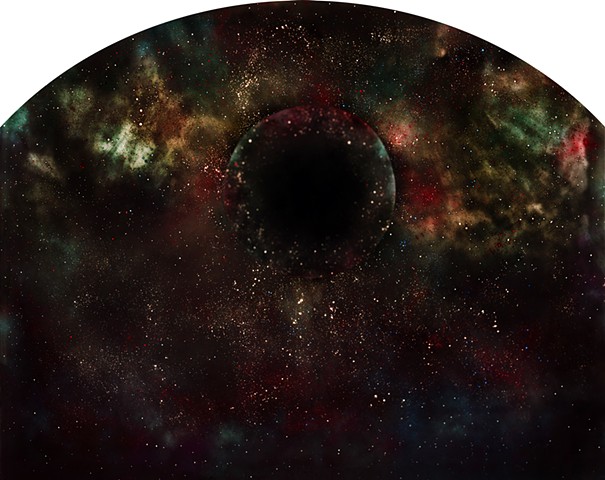In music theory, a wolf interval is the combination of notes that are spaced too close to one another to produce what western ears appreciate as harmony. Instead, such paired notes produce a dissonant tone, not unlike the howling of its namesake. The working model by which I approach my own work in photography and its constituent pieces is adopted from the same process of overlapping sources that result in sharp teeth and howling notes. Some of my primary sources of content are drawn from Italian and Northern European Renaissance painting, geo political violence in the Middle East, deep space astronomy and physics, Victorian spiritualist photography, alongside various forms of photography that have traditionally sought to use the camera as a mediator of complex spaces. At first glance, these areas of interest do not have many overlapping limbs. But within them collectively, I am always looking for ways in which their parameters as images intersect with the implications each type of image conjures for the viewer. For example, the remote imaging made with surveillance cameras intersects with the cameras on board the Hubble space telescope. Each example lends itself to a very particular kind of image and the subsequent expectations a viewer might have of that kind of image production. And at their core, they are looking for something that lies outside our field of vision.
My photographs are made within a controlled studio environment, and often consist of sculptural objects and spaces made for the sole purpose of being interpreted by the camera. As for the camera, I use a monorail 8x10 view camera. This camera produces negatives that are 8”x10”. Each image I make takes from weeks to months to prepare and execute. But the critical part of my process lies in the physicality of what the camera sees. Many of my areas of interest are contingent on the raw physicality that defines their state. Likewise, it is crucial for me to make all of the visual anomalies and distortions found within my photographs something that sits in front of the camera itself, occupying a very real physical space. That is to say; everything in my photographs is made in-camera. There are no effects created, added, or imposed in the darkroom or digitally. This is not an issue of “purity” on my part. Rather, it is integral to my relationship to the content of my work, as I am often addressing themes that reflect a strained or profound connectivity to physical spaces and this is my way of honoring that content.
